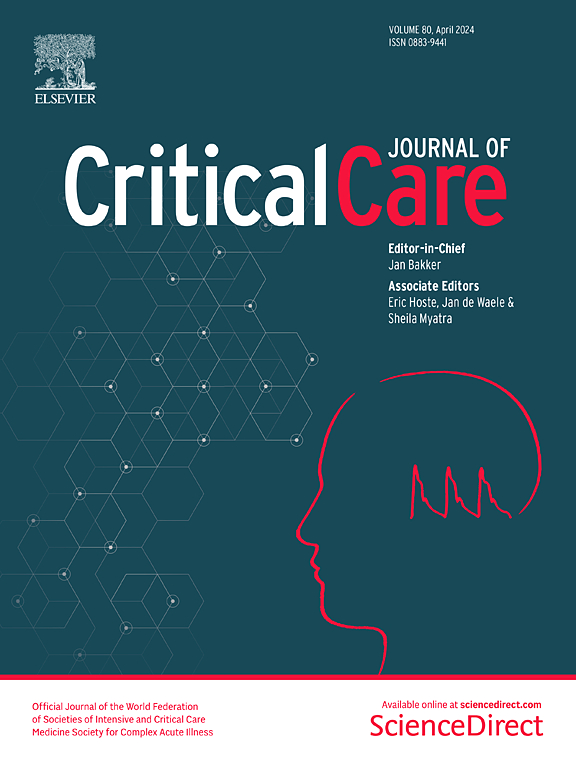Circular material flow of medication in the intensive care unit
IF 8.8
1区 医学
Q1 CRITICAL CARE MEDICINE
引用次数: 0
Abstract
Intensive care units (ICUs) contribute significantly to healthcare's environmental footprint, with medications playing a major role. This study performed a comprehensive Material Flow Analysis (MFA) of medications in a large academic ICU to quantify material flows and identify opportunities for sustainability. A single-center MFA was conducted at a 50-bed ICU, analyzing all medications delivered in 2023. Medication and packaging components were weighed and categorized by active pharmaceutical ingredients (APIs), excipients, and packaging type. Total annual mass as well as daily medication and packaging waste per patient were calculated. The annual medication inflow totaled 234,337 kg, including 194,411 kg of medication content (5287 kg APIs, 189,124 kg excipients) and 39,923 kg of packaging. APIs constituted only 2.3% of the total medication mass. On average, patients received 89.5 medication units daily, totaling 5.0 kg of medication and generating 1.7 kg of packaging waste. Waste outflow comprised 194,413 kg to the sewage system, 21,894 kg for incineration, and 18,030 kg recycled, consisting primarily of continuous renal replacement therapy (CRRT) bags. This MFA highlights significant opportunities to enhance ICU medication sustainability by targeting CRRT-related waste, optimizing fluid formulations to reduce excipient use, and minimizing packaging. These findings support the development of targeted interventions to reduce the environmental footprint of critical care.重症监护病房药物循环物料流
重症监护病房(icu)对医疗保健的环境足迹做出了重大贡献,其中药物发挥了重要作用。本研究在一个大型学术ICU中对药物进行了全面的物质流分析(MFA),以量化物质流并确定可持续性的机会。在50个床位的ICU进行单中心MFA,分析2023年交付的所有药物。对药物和包装成分进行称重,并按活性药物成分(api)、辅料和包装类型进行分类。计算每位患者的年总质量以及每日药物和包装废弃物。年药品流入总量为234,337 kg,其中药品内容194,411 kg(原料药5287 kg,辅料189,124 kg),包装39,923 kg。原料药仅占总用药质量的2.3%。患者平均每天接受89.5个药物单位,总计5.0公斤药物,产生1.7公斤包装废弃物。排放到污水系统的废物为194,413公斤,焚烧的废物为21,894公斤,回收的废物为18,030公斤,主要包括持续肾替代疗法(CRRT)袋。该MFA强调了通过针对crrt相关浪费、优化液体配方以减少辅料使用和最小化包装来增强ICU药物可持续性的重要机会。这些发现支持有针对性的干预措施的发展,以减少重症监护的环境足迹。
本文章由计算机程序翻译,如有差异,请以英文原文为准。
求助全文
约1分钟内获得全文
求助全文
来源期刊

Critical Care
医学-危重病医学
CiteScore
20.60
自引率
3.30%
发文量
348
审稿时长
1.5 months
期刊介绍:
Critical Care is an esteemed international medical journal that undergoes a rigorous peer-review process to maintain its high quality standards. Its primary objective is to enhance the healthcare services offered to critically ill patients. To achieve this, the journal focuses on gathering, exchanging, disseminating, and endorsing evidence-based information that is highly relevant to intensivists. By doing so, Critical Care seeks to provide a thorough and inclusive examination of the intensive care field.
 求助内容:
求助内容: 应助结果提醒方式:
应助结果提醒方式:


